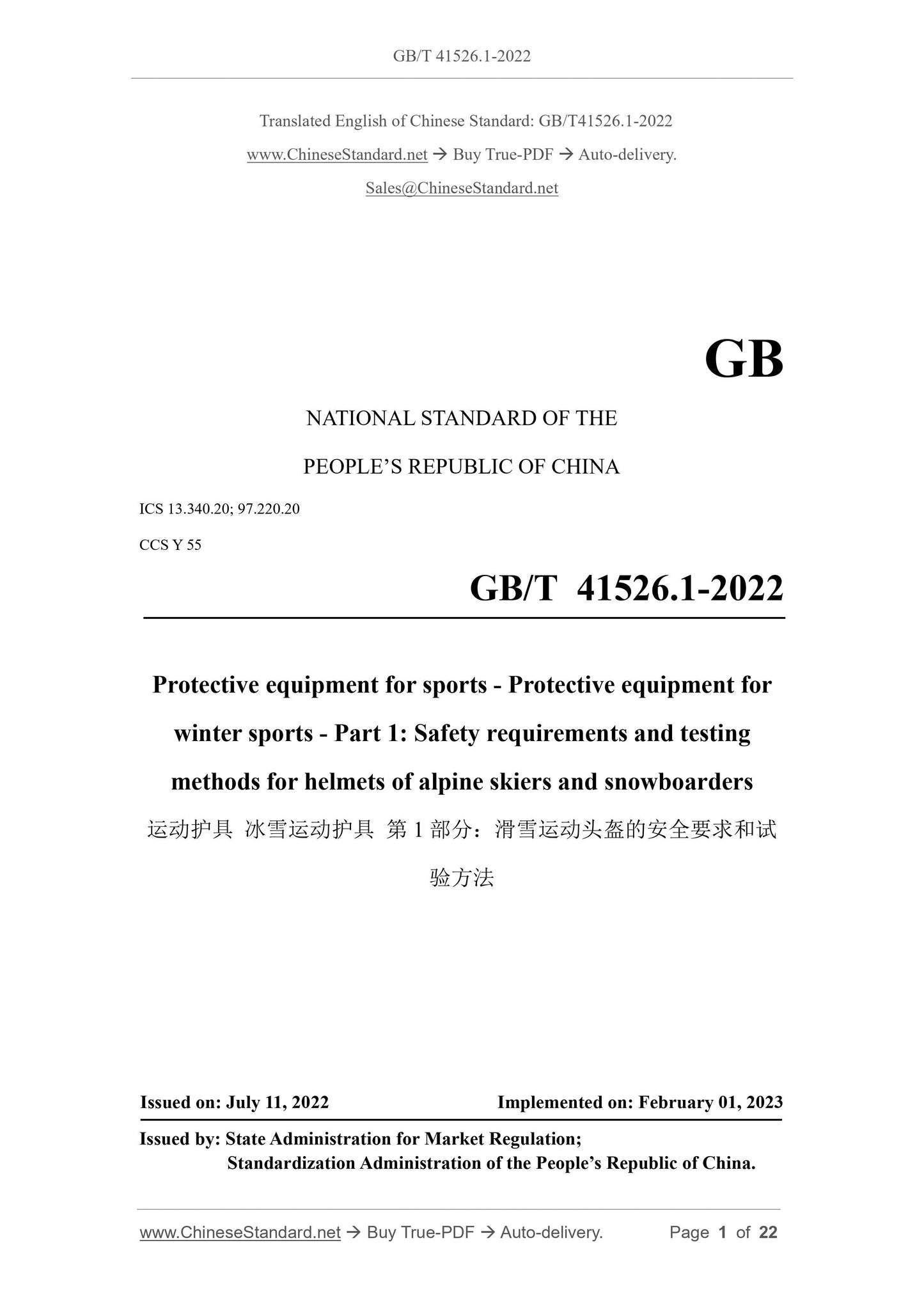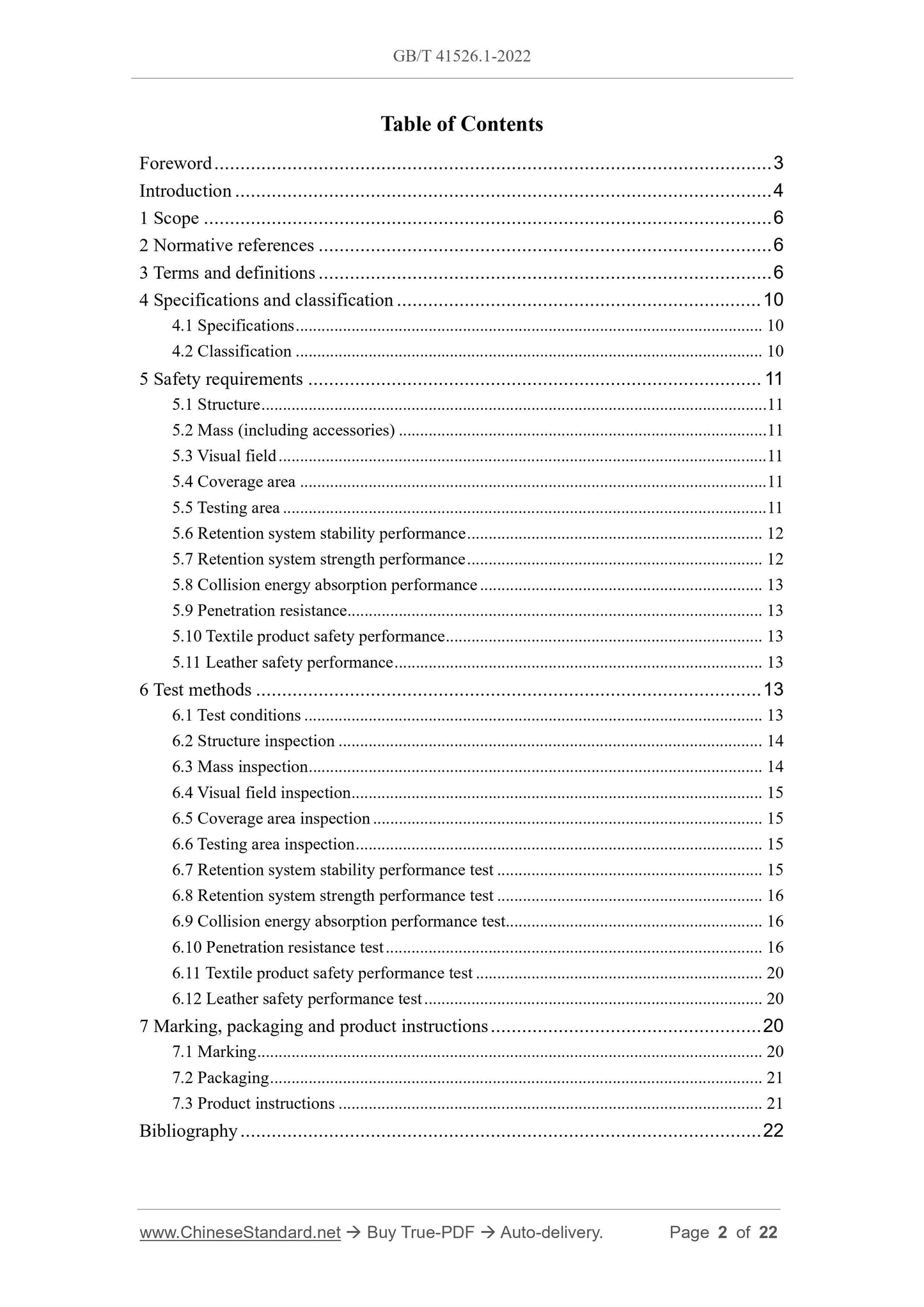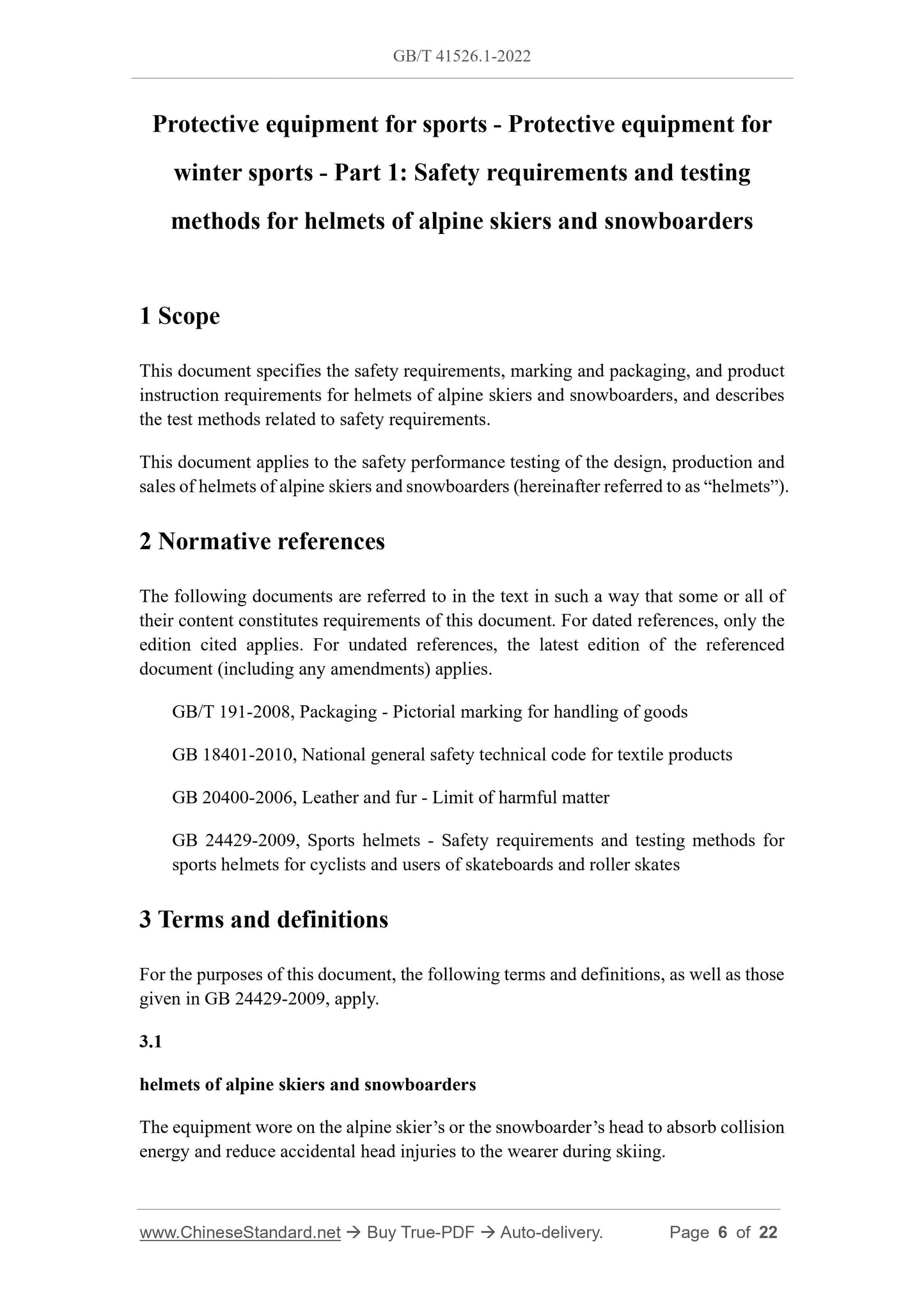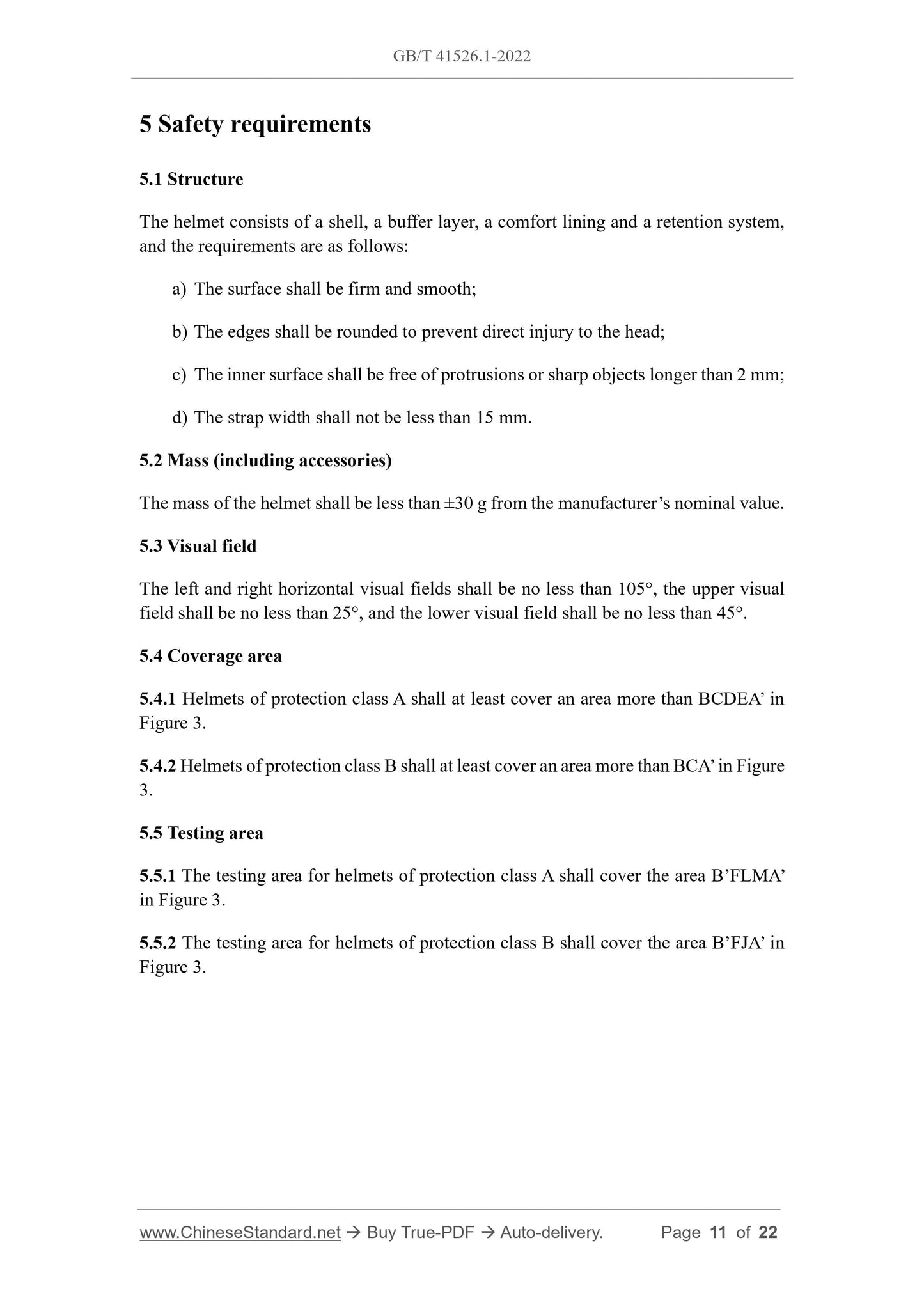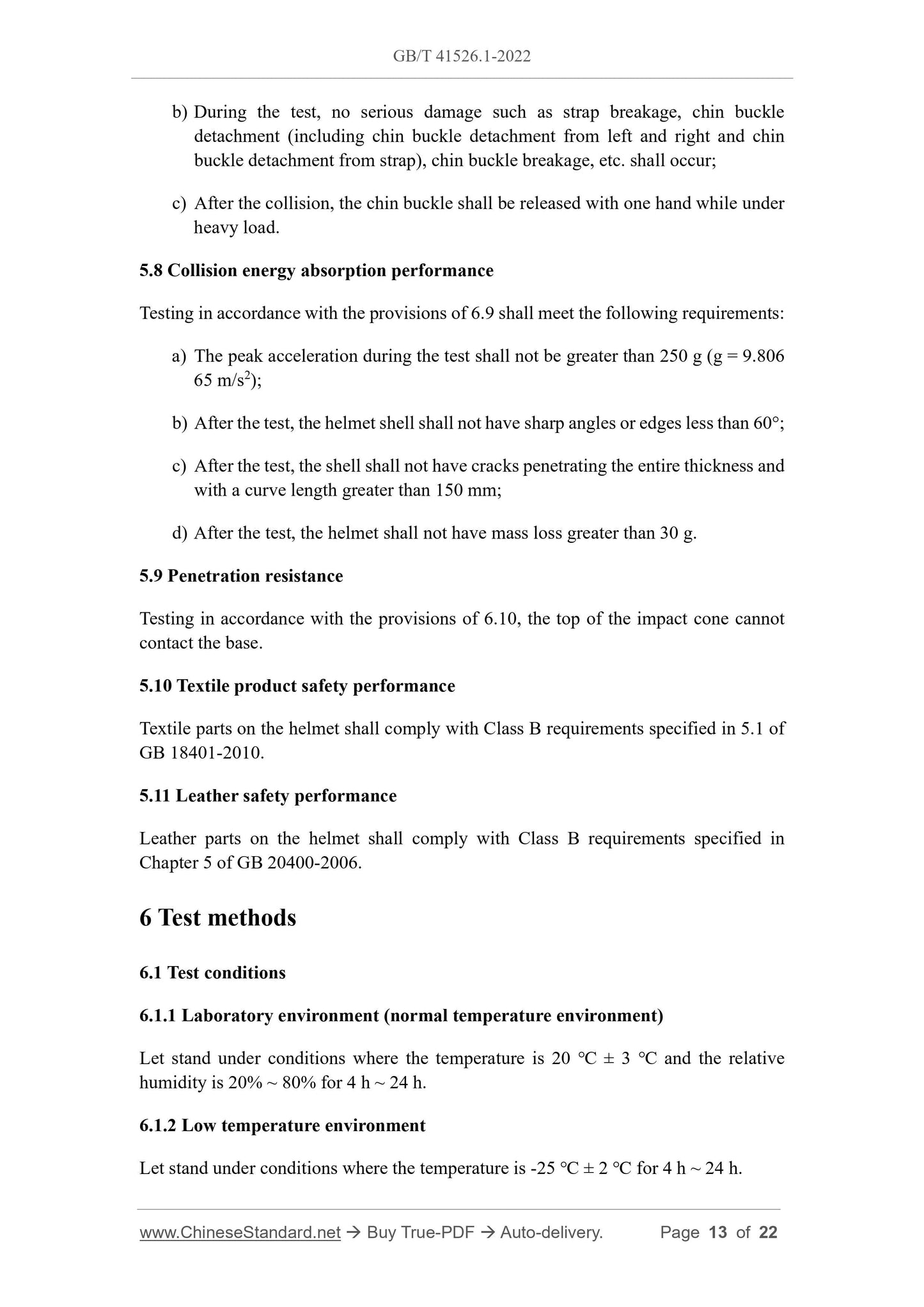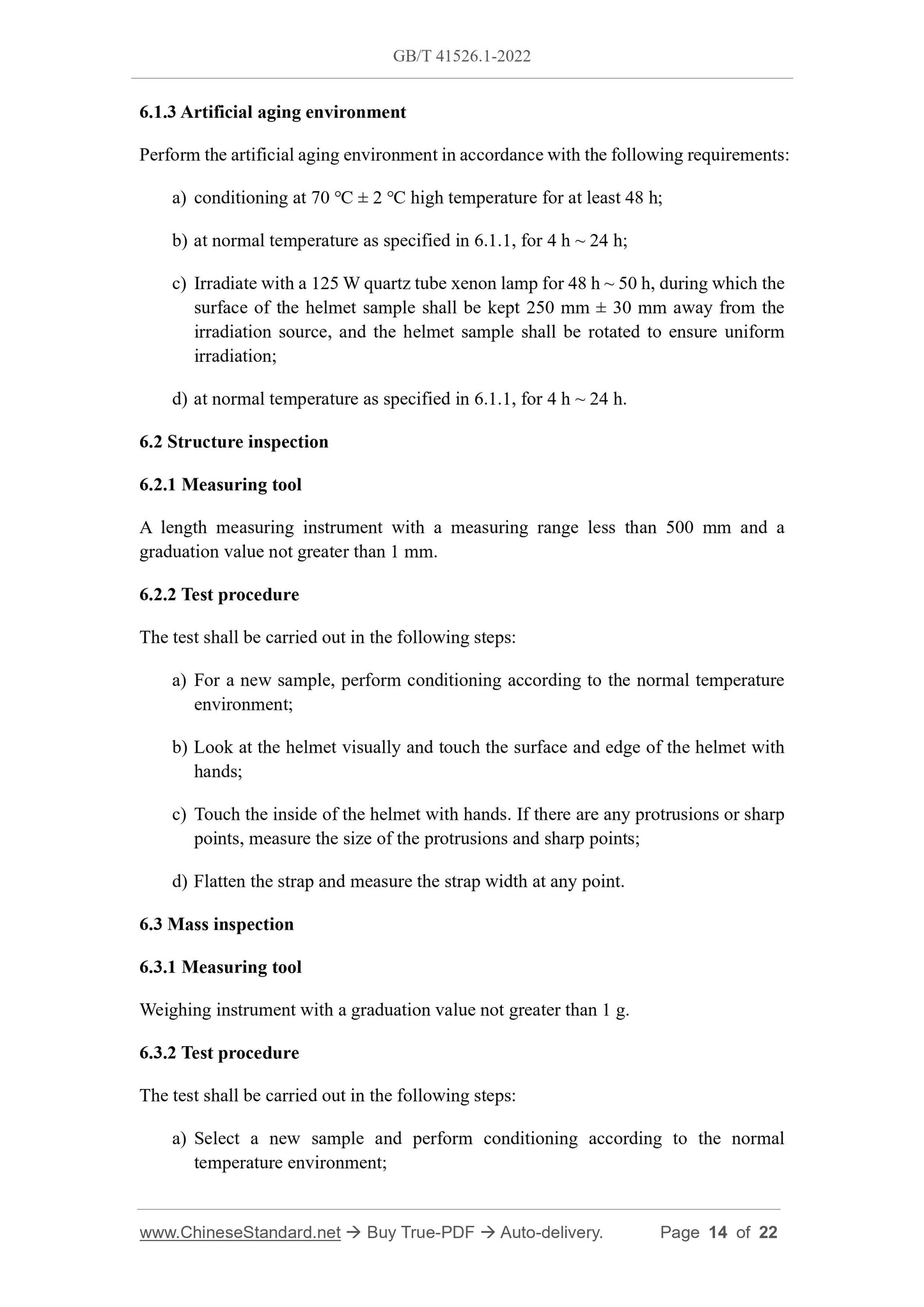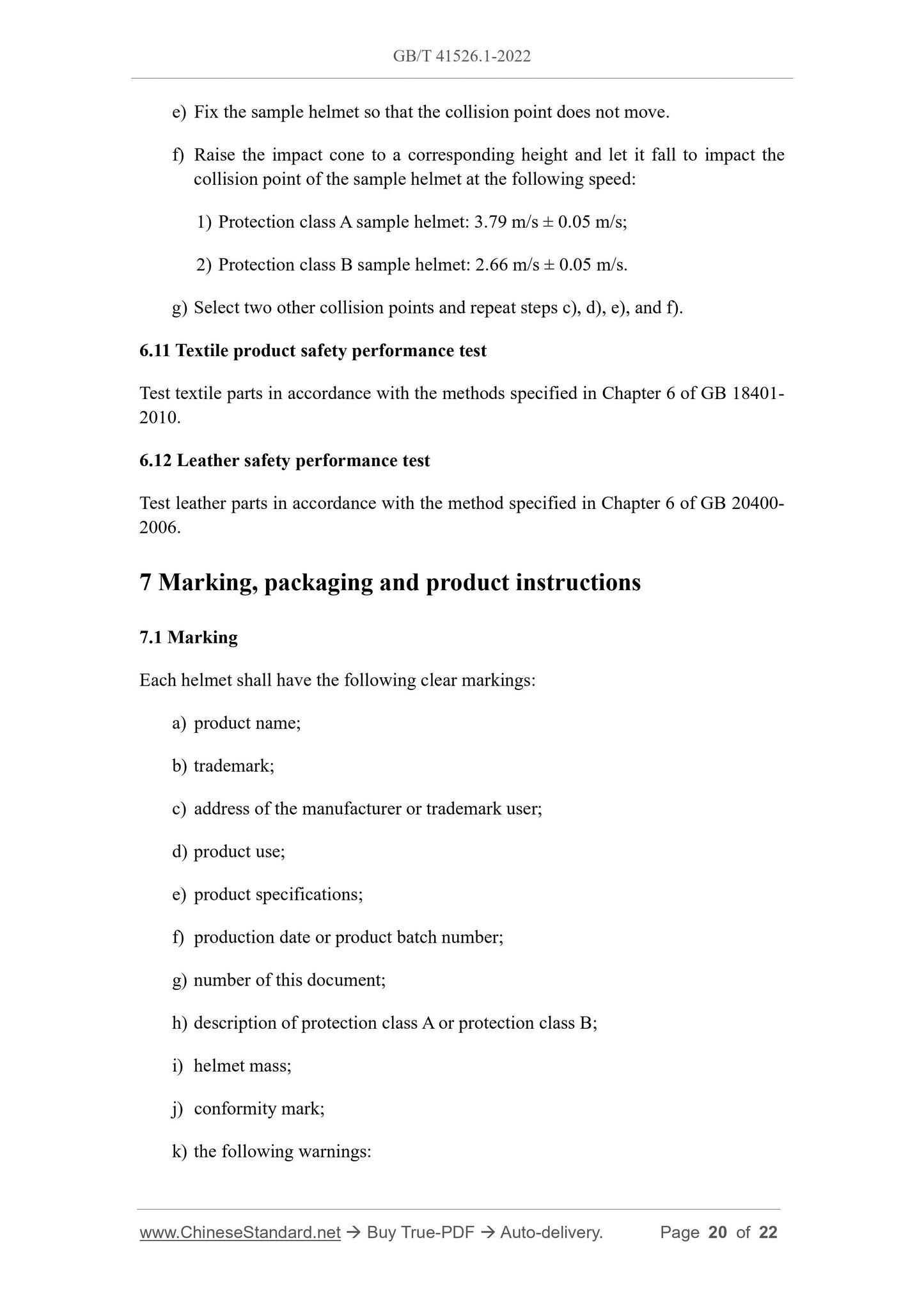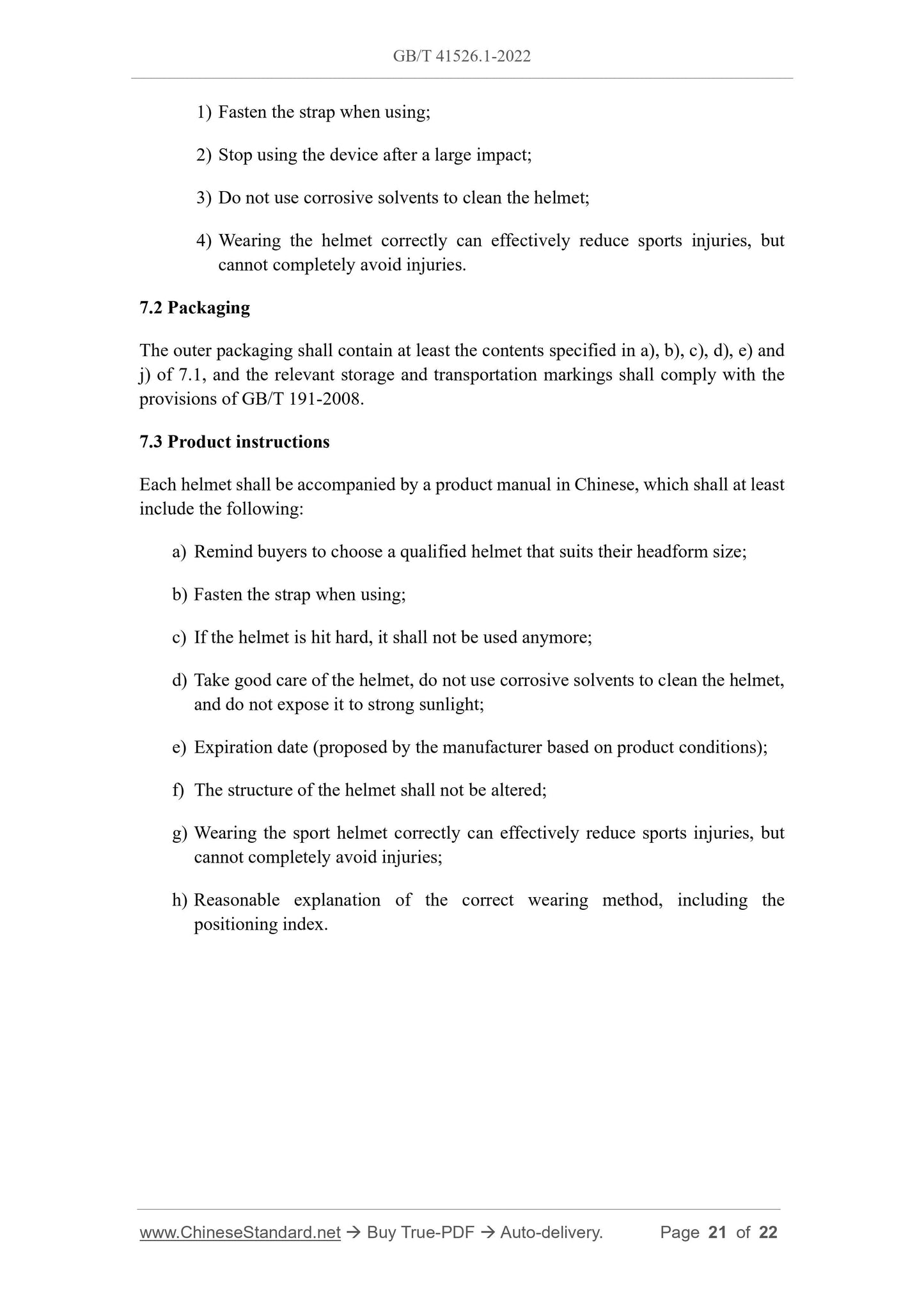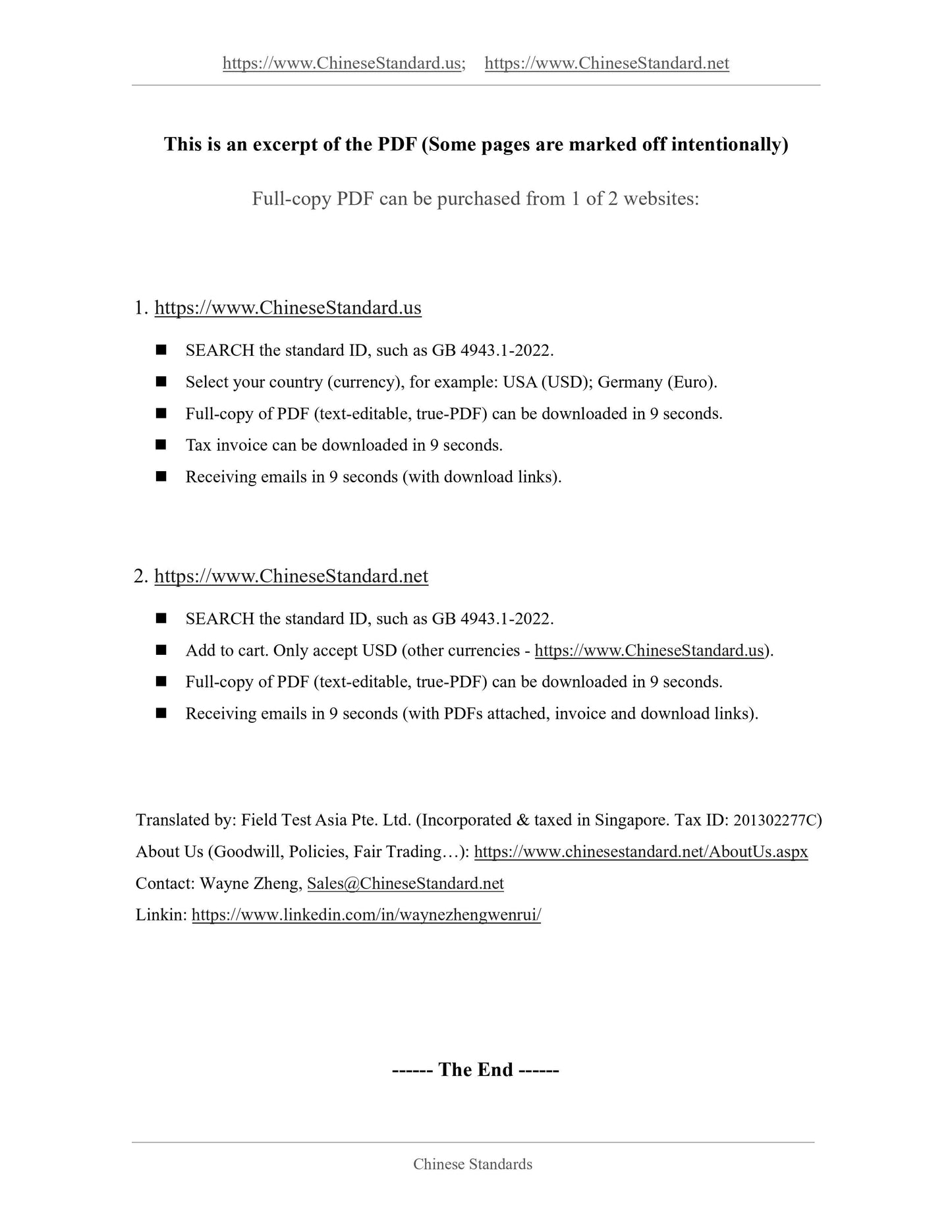1
/
of
10
www.ChineseStandard.us -- Field Test Asia Pte. Ltd.
GB/T 41526.1-2022 English PDF (GB/T41526.1-2022)
GB/T 41526.1-2022 English PDF (GB/T41526.1-2022)
Regular price
$290.00
Regular price
Sale price
$290.00
Unit price
/
per
Shipping calculated at checkout.
Couldn't load pickup availability
GB/T 41526.1-2022: Protective equipment for sports - Protective equipment for winter sports - Part 1: Safety requirements and testing methods for helmets of alpine skiers and snowboard
Delivery: 9 seconds. Download (and Email) true-PDF + Invoice.Get Quotation: Click GB/T 41526.1-2022 (Self-service in 1-minute)
Newer / historical versions: GB/T 41526.1-2022
Preview True-PDF
Scope
This document specifies the safety requirements, marking and packaging, and productinstruction requirements for helmets of alpine skiers and snowboarders, and describes
the test methods related to safety requirements.
This document applies to the safety performance testing of the design, production and
sales of helmets of alpine skiers and snowboarders (hereinafter referred to as “helmets”).
Basic Data
| Standard ID | GB/T 41526.1-2022 (GB/T41526.1-2022) |
| Description (Translated English) | Protective equipment for sports - Protective equipment for winter sports - Part 1: Safety requirements and testing methods for helmets of alpine skiers and snowboard |
| Sector / Industry | National Standard (Recommended) |
| Classification of Chinese Standard | Y55 |
| Word Count Estimation | 19,165 |
| Issuing agency(ies) | State Administration for Market Regulation, China National Standardization Administration |
Share
